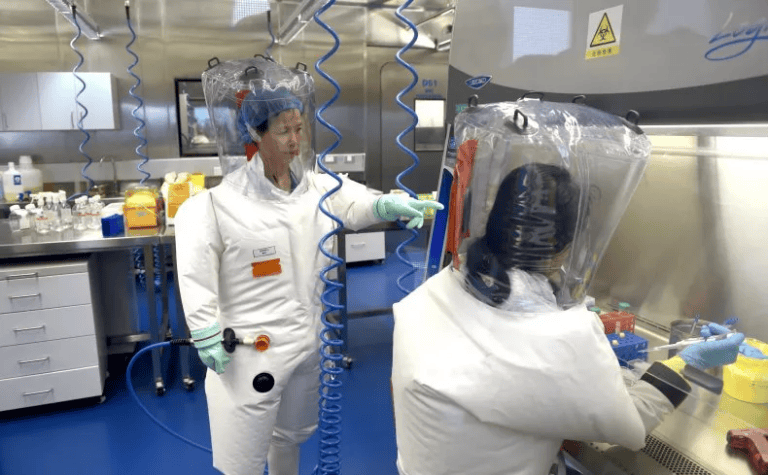Animal + Natural Science Today: Cool Tech That Helps Us Learn Nature
Nature feels big. Nature feels busy. Scientists use new tools to study it. The tools look small. The ideas feel big. This post shows seven tools. Each tool has a simple idea. Each tool gives clear data. Each tool helps people protect life on Earth.

1) eDNA: Finding Life From Water or Dirt
Every animal drops tiny bits of DNA. Hair falls off. Skin cells float. Poop breaks apart. Rain moves it. Streams mix it. Scientists collect water or soil. They run lab tests on that mix. They look for DNA codes. A match shows the species. No nets. No traps. Fewer boat trips. Fast results. Good for rare fish. Good for shy frogs. Good for early alerts on invasive carp.
How it works
- Scoop a bottle of water. Filter it.
- Pull DNA off the filter.
- Copy the DNA in a machine.
- Compare the code with a library.
- Report which species left that code.
Common example
- A team checks a lake for invasive carp. No fish in nets. Carp DNA shows up in the sample. Action starts before the fish spread.
2) AI That Listens: Bird Sound ID
Many birds sing. Many songs sound close. An app named BirdNET listens. The phone records a short clip. The app runs a neural network. The model guesses the species. The guess uses patterns in the sound. Students see names on the screen. Students learn calls in the field. Teachers collect class data with the app.
How it works
- Record a chirp.
- Turn sound into a picture called a spectrogram.
- Feed the picture to a trained model.
- Get top species matches.
- Check maps for fit.
Common example
- A backyard has robins at dawn. The app shows “American Robin.” The log stores time and place. Patterns grow over weeks.
3) Smart Camera Traps + Machine Learning
A camera trap sits on a trail. Motion wakes it up. The lens snaps a photo. The memory card fills up. Old work took months to sort. New sites use AI to tag images. The AI finds “jaguar” or “empty frame.” Teams share dashboards. Maps update fast. Fewer errors. More insight.
How it works
- Mount a camera near tracks.
- Collect a set of images.
- Upload to a platform.
- Run a model that spots species.
- Review only the tricky cases.
Common example
- A park wants to count pumas. Cameras watch at night. The model flags likely puma photos. Rangers confirm IDs and plan patrols.
4) Biologging: Tiny Tags Tell Secret Lives
Many animals carry tags. A tag can track depth. A tag can track speed. A tag can track location. Some tags pop off and float. A satellite reads the tag. Data flows to a map. The trip path shows on a screen. Scientists see dives of sharks. Scientists see long swims of turtles. Better maps lead to better rules.
How it works
- Attach a small tag with care.
- The tag records motion and place.
- The tag sends data to receivers or satellites.
- The lab cleans the data.
- The map shows routes and habits.
Common example
- Salmon wear acoustic tags. Receivers in rivers hear pings. Teams learn which routes work best. Dam plans improve.
5) Drones: Eyes in the Sky for Wildlife
A small drone takes off. The camera points down. The drone flies a grid. Photos overlap. Software stitches a map. People count seals on ice. People check nests on cliffs. Fewer risky climbs. Less stress on animals. Faster surveys after storms. Anti-poaching teams also use drones. Patrols move to the right spot.
How it works
- Plan a path on a tablet.
- Fly above the site.
- Capture many images.
- Build a 3D model or map.
- Compare maps over time.
Common example
- A beach has turtle nests. A drone counts tracks at dawn. Staff place signs near fresh nests. Visitors step around the sites.
6) Satellites: Big-Picture Nature From Space
Some stories need a wider view. Satellites see forests. Satellites see reefs. Satellites see fires and floods. Data streams to open sites. Students can download scenes. Models turn pixels into habitat maps. Planners spot drought stress in plants. Teams measure where animals can live. Park borders can change with new data.
How it works
- Sensors record light from Earth.
- Computers filter clouds.
- Algorithms classify land cover.
- Maps show change by month or year.
- Users link maps with animal tracks.
Common example
- A herd moves as grass dries. Track lines meet satellite maps. Water spots guide new corridors. Fences move to help the herd.
7) DNA Barcoding: A Simple Code for Species Names
A short DNA region works like a store barcode. Each species has a pattern. Labs read that short region. A match gives the name. This helps when a leaf looks tricky. This helps when a larva lacks key shapes. This helps when trade hides the label. Plant labs build big libraries for this work.
How it works
- Take a tiny tissue sample.
- Extract the DNA.
- Copy the barcode region.
- Sequence the code.
- Match the code to a reference set.
Common example
- A store sells “wild ginseng.” A test reads the barcode. The code shows a different plant. The label changes after the test.
8) AI for Whale Talk: Can We Learn the Click Code?
Sperm whales click in patterns. The clicks form units called “codas.” A group may share a style. New projects place recorders in deep water. Robots follow pods. AI models search the clicks. The goal is to map the code. The hope is to link code to behavior. A future tool may play a reply. The team tests this vision in the Caribbean.
How it works
- Place many mics near whales.
- Sync the clocks.
- Collect long audio files.
- Train models on click features.
- Test if patterns predict actions.
Common example
- A pod feeds in deep water. The model spots a shift in codas. Boats move back to reduce noise. The pod feeds without stress.
References
- U.S. Geological Survey — “Environmental DNA (eDNA)”
- USGS Wetland and Aquatic Research Center — “eDNA and invasive carp”
- Cornell Lab of Ornithology — “BirdNET Sound ID”
- Wildlife Insights — “Machine learning tools for camera-trap data”
- Methods in Ecology and Evolution — “Platforms for processing camera-trap data”
- NOAA — “U.S. Animal Telemetry Network”
- WILDLABS — “Intro to Satellite Technologies for Tracking Wildlife”
- WWF — “Drones for Conservation”
- NASA Earthdata — “Remote sensing for biological research”
- Wildlife Management Institute — “NASA and WMI Partner to Support Biodiversity”
- Smithsonian National Museum of Natural History — “Plant DNA Barcode Project”
- Smithsonian Magazine — “DNA Barcoding opens new doors”
- Project CETI — “AI to study sperm whale communication”
- The Guardian — “Translating animal languages”



